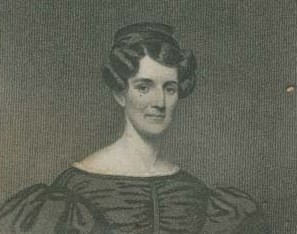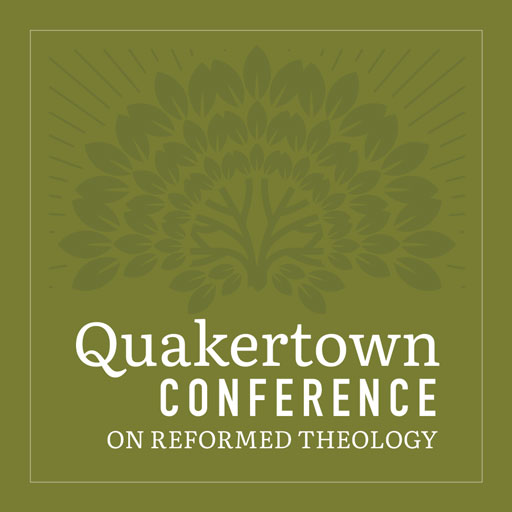
Sarah Lanman Huntington Smith – Missionary to Mohegans and Syrians
Sarah Lanman Huntington Smith – Missionary to Mohegans and Syrians
The idea that many of the Mohegans who lived in her region had never heard the gospel bothered Sarah Huntington (1802-1836) so much that it turned into a source of anxiety. Few people shared her sentiments. She could just imagine someone in her town telling her, “Dear me! if I had nothing more than poor Indians to trouble me, I should be happy.”[1]
Rather than waiting for others to join her cause, she saddled her horse and rode the six miles from her native Norwich, Connecticut, to the Mohegan villages, armed with tracts and sharing her saddle with a young Mohegan girl she hired as an interpreter. It was 1827 and she was 25 years old.
Missionary to the Mohegans
In each village, her arrival was met with curiosity. “You would have been quite amused to have seen the picture which I presented — a little Indian girl behind me upon the horse, and half a dozen other children following on foot, talking as fast as their tongues would go,”[2] she wrote a friend.
If she met other Native Americans along the way, she would get off her horse and talk with them. Soon, she was well-known and trusted. She began to spend more time in the villages. She planned to stay a whole season, but her mother’s poor health forced her to change her plans.
Convinced of the importance of education, she started a Sunday school, raising funds to build it and sharing the teaching schedule with a friend. Each session lasted four hours and included basic education, biblical instruction, and practical skills such as tailoring and hat-making. The lessons were held in the home of some relatives of the renowned Mohegan preacher Samson Occom, who had died about 30 years earlier. About 15-20 people attended, including four adults.
To those who asked her if the Mohegans were grateful for her efforts, Sarah was quick to reply: “’We are but discharging, in some inadequate measure, our debt of gratitude to them; the obligation is on our part.”[3]
Fully aware that her small school was not sufficient to meet the educational needs of a whole tribe, she petitioned the Connecticut legislature to fund a school. When they turned down her request, she wrote to the United States Secretary of War (who, at that time, supervised Native American affairs).
She also tried to get a church built in the village, where a minister could be called. To this purpose, she wrote a letter to the American Board of Commissioners for Foreign Missions (ABCFM), explaining that some of the Mohegans had fond memories of earlier missionaries but were hesitant in believing that some westerners would renew an effort “not dictated by some selfish principle, or destined soon to evaporate.”[4] She promised ABCFM that the financial burden would not fall on them, since she was already raising funds.
She was equally concerned about other native groups. In 1831, when the government forcibly removed the Choctaws and Pequods from their lands, she urged the women in her prayer group to plead the Lord for them. “I do believe that an almighty power will arise for this peculiar people, and confound their enemies,”[5] she said.
Her request for a pastor for the Mohegans was answered when the missionary board sent Anson Gleason, who had been a missionary to the Choctaws for ten years. Gleason remained with the Mohegans 16 years.
Missionary to Syria
In 1833, after so many accomplishments, Sarah left the Mohegans to accept a marriage proposal from Eli Smith, of the American Mission at Beirut, Syria. By then, she felt that the Mohegan church was running well, “that each one knows his place, and there are many idle hands which could well be spared or act as substitutes.”[6]
And she was right. Gleason continued to make progress with hearty support by most of the natives. There is a heartwarming story of a young Mohegan girl who, realizing that her family could not contribute to the support of the church, went to the forest to collect hazelnuts, then walked to Norwich to sell them, and brought the proceeds to Gleason.
Though thoroughly convinced that God had called her to the mission field, leaving her home was painful. “Nothing but the hopes of the gospel sustain me,” she wrote. “Earth cannot furnish a motive sufficiently powerful to justify such a sacrifice.”[7]
In Beirut, Sarah learned Arabic, French, and Italian in order to help her husband with translation work. Still convinced of the importance of education, she also founded and organized the first school for young Arab girls in Beirut – which has evolved into today’s Lebanese American University (LAU).[8]
It was a ground-breaking accomplishment that she overtook with passion. As other female missionaries, she valued the influence women exercised in their homes and consequently in their countries. “Could the females of Syria be educated and regenerated, the whole face of the country would change,”[9] she wrote. For this reason, she celebrated “the first female prayer meeting that was ever held in the Arabic language.”[10]
Initially, Sarah suffered from culture shock. Arabs seemed to her “ignorant, deceitful, ungrateful and unwholesome.” She asked for prayer. “We are in danger of despising them, and of exulting in our own superiority,” she said.
She had to remind herself, “Here are the very persons over whom my heart so yearned, when I was far away in my native land.”[11]
It didn’t take long, however, for Sarah to get a better understanding of Syrian culture and realize that what seems natural to one culture might seem distasteful to another. For example, she said, “the plain, independent manners of some of our good republican citizens would be somewhat offensive to foreign taste.”[12]
“In some respects, my feelings and opinions have been changed since I left America,” she continued. “Looking at our national character at the distance of 5,000 miles, and mingling with foreigners, I feel myself forming a more impartial estimate than when I was borne along amid the excitement and self-complacency to which my countrymen are certainly exposed. While I see much to admire and love, I also see faults that I could wish might be corrected. That humorous poetical effusion of Halleck, describing the Connecticut character, is not inapplicable to the nation at large: ‘They have a natural talent for foreseeing and knowing all things,’ and ‘Would shake hands with a king upon his throne, and think it kindness to his majesty’”[13]
“Now you must not think that I am becoming a traitor to my own dear native land,” she clarified. “It is my love for it that makes me jealous of her reputation.”[14]
In some things, she thought Americans could learn from the Syrians – for example, in the respect children showed their parents. She also came to disagree with the common western expectation that other cultures reject their practices before becoming Christians.
One of her hardest adjustments was to the local habit of dropping into someone’s home without notice and expecting to be entertained. “It is quite a formidable circumstance to receive and make Arab visits, so much ceremony is requisite,” she said. “Hospitality is regarded here as a religious act, I think, and reputation is greatly prized. … There is no regularity or system in the arrangement of their time; of course, our New England habits are often encroached upon. Sometimes when I am occupying an early hour in the few domestic cares in which I allow myself, and half a dozen Arab females parade into the room, I am obliged to summon all my benevolence and recollection, to enable me to perform the rites of hospitality with perfect cheerfulness. ‘For this cause was I sent’ are words which frequently come into my mind of late, when thus interrupted.”[15]
Since her Arabic was still not good enough to allow a deep conversation about religion, Sarah believed that being hospitable was a good way to gain people’s confidence and open a way for future discussions. She also engaged in charitable work toward the poor.
The key to her ability to keep up with all her activities while keeping a well-run and orderly home is what today we would call minimalism. She had a place for everything, dispensed with everything that was not necessary, and reduced the number of meals to two a day (breakfast and dinner).
After only three years in the field, however, Smith died of consumption. She was sailing home from Israel. At the news of her death, the flags of the American ships in the harbor were lowered to half-mast.
Her memoir, compiled by her brother-in-law Edward Hooker from the letters she had sent home, became an immediate best-seller. Readers are impressed by her candor and her thoughtful reflections on her experiences and the cultures she learned to embrace.[16]
[1] Edward W. Hooker, Memoir of Mrs. Sarah Lanman Smith, Perkins & Perkins, Philadelphia, PA, 1839, 71
[2] Hooker, Memoir, 113
[3] Hooker, Memoir, 114
[4] Hooker, Memoir, 111
[5] Hooker, Memoir, 121
[6] Hooker, Memoir, 134
[7] Hooker, Memoir, 146
[8] https://www.lau.edu.lb/about/history/
[9] Hooker, Memoir, 214
[10] Hooker, Memoir, 231
[11] Hooker, Memoir, 297
[12] Hooker, Memoir, 226
[13] Hooker, Memoir, 233
[14] Ibid.
[15] Hooker, Memoir, 235
[16] For more information about Sarah Huntington Smith and her legacy (besides her Memoir), see Robert D. Stoddard, Jr., Sarah and her Sisters: American Missionary Pioneers in Arab Female Education, 1834-1937, Hachette Antoine, 2020

























